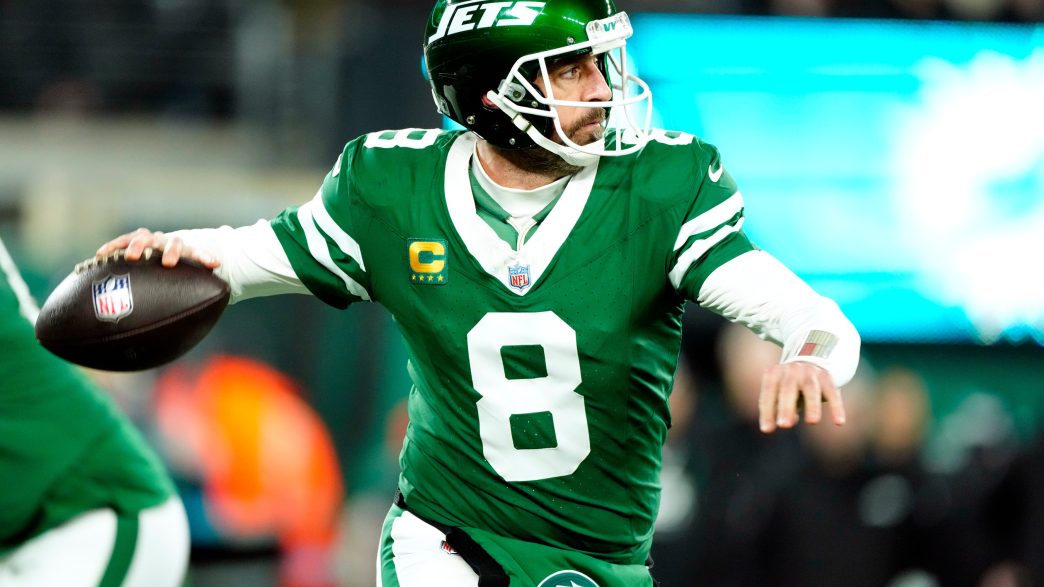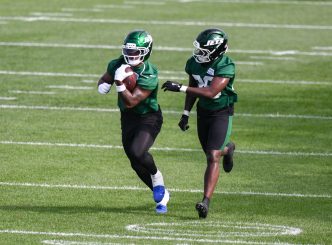It feels like we’ve been watching a reality show unfold with Aaron Rodgers taking center stage in an unusual dating game. After a tumultuous saga that felt longer than anyone anticipated, our charismatic bachelor found himself navigating the NFL landscape, searching for his next team. Having been released from his former commitment with the New York Jets, he set his sights on the Pittsburgh Steelers. However, after a flirtation with a couple of other options that didn’t pan out, he reluctantly decided to settle down with the last team standing.
Fast forward 85 days since his exit from the Jets, Rodgers has officially teamed up with the Steelers. This comes after both the Minnesota Vikings and the New York Giants made moves to secure other quarterbacks, leaving him with limited choices. With Mason Rudolph having steered the ship during the team’s offseason practices, the Steelers are now ready to welcome Rodgers as he prepares for their mandatory minicamp.
The Steelers have rolled the dice by signing this future Hall of Famer, armed with accolades like a Super Bowl ring, four MVP awards, and ten Pro Bowl selections. However, one cannot ignore the elephant in the room: Rodgers, nearing his 42nd birthday, isn’t quite the player he used to be. The Steelers’ coaching staff, including Mike Tomlin and general manager Omar Khan, are hoping that Rodgers can channel the success Tom Brady found late in his career with Tampa Bay. But let’s be honest—Rodgers and Brady aren’t playing in the same league anymore, and the Steelers’ roster doesn’t stack up against those 2020 Buccaneers.
Sure, Rodgers is undeniably the most seasoned quarterback on Pittsburgh’s roster. His experience outweighs that of Rudolph, who has a mixed record, and other less proven options like Skylar Thompson and rookie Will Howard. With Rodgers at the helm, his experience should elevate a Steelers offense that has seen its fair share of struggles, especially with some personnel changes, including swapping out George Pickens for DK Metcalf and replacing running back Najee Harris with rookie Kaleb Johnson.
Yet, there’s a lingering question of whether Rodgers can truly orchestrate a turnaround. After all, last season was marked by disappointment as he tried to navigate a Jets offense brimming with talent. The Steelers boast a traditionally strong defense, but their struggles on offense over the years raise concerns about whether Rodgers can significantly improve their output.
While acquiring a player like Metcalf may add a spark, the statistics show that he doesn’t measurably surpass what Pickens brings to the table. If Pittsburgh was so committed to this matchup with Rodgers, it does beg the question why they didn’t retain Pickens to provide a solidified receiving duo to support their newly acquired quarterback.
The caution flags don’t stop there. Assessing the last three seasons, the statistical similarities between Rodgers and Russell Wilson are startling. Both quarterbacks have seen their fair share of highs and lows, with performances resembling each other to a concerning degree. A playoff win drought looms for the Steelers, and the decision to avoid investing in a young, top-tier quarterback speaks volumes. The inevitable march of time waits for no player, and history shows us that late-career successes in the NFL are rare.
As serious as the physical decline may be, the bigger issue for the Steelers might rest on Rodgers’ off-field antics, which have sparked questions regarding his fit within the team’s disciplined culture. Tomlin emphasizes accountability and the “Steeler standard,” yet here he is, betting on a quarterback not known for his humility or team-first mentality.
Pittsburgh would do well to remember how Rodgers’ tenure in Green Bay ended—marked by controversy and dissatisfaction with management. His recent patterns of behavior in New York didn’t paint a picture of a player willing to shoulder accountability during a down year for the franchise. By hiring Rodgers, the Steelers risk ushering similar drama into their locker room, believing, perhaps naively, they can achieve what others could not.
The relationship dynamics between Rodgers and offensive coordinator Arthur Smith also present a significant concern. Can Smith find common ground with a quarterback who still sees himself as a gunslinger, especially when much of the Steelers’ offensive philosophy leans towards a conservative, run-first approach? They’ll have to build chemistry quickly with limited time before the season ramps up.
As training camp approaches, all eyes will be on how these relationships play out. Will Rodgers mesh with his new teammates, or will his history of throwing former colleagues under the bus come into play? The Steelers face a daunting challenge as they strive toward a deep playoff run, all while ignoring potential red flags in the process.
The reality, though, is that this deal may not result in the glorious return to form many are hoping for. In truth, the best-case scenario might just set up the Steelers nicely for a future where they could draft their next franchise quarterback. At worst, they could find themselves navigating another mediocre season, once again stuck in a cycle of uncertainty and underachievement.
So, as we assess this latest chapter in Aaron Rodgers’ career, one thing becomes clear: a Super Bowl run seems unlikely for this version of the quarterback. The dance may be worth it for some, but for the Steelers, it might just lead to football purgatory.








